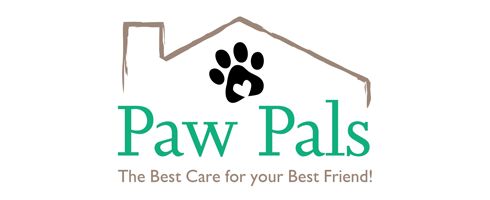Among the more confusing things your dog may do is to suddenly stop and sit while walking. This is called “planting”. Sometimes, your dog may plant and refuse to move off for several minutes.
Owners of small dogs may pick the dog up and carry it. When the owner does that, the dog soon learns that if it plants, its owner will pick it up. With a larger dog, however, picking it up and carrying it is not an answer. You have to find a way to entice your dog into moving off. The place to begin is first to try to figure out what is causing your dog to stop and sit during a walk.
Reasons Dogs Suddenly Plant While Walking
Dogs stop and sit or plant themselves for many reasons. As a dog-loving owner, you should not mistakenly assume your dog is “lazy” before trying to determine why your dog is planting. The most common reasons for a dog’s planting behavior include:
Pain or Illness
If your dog is normally energetic and walks happily along but suddenly plants, you should suspect pain or illness. Check your dog’s paws to make sure it hasn’t stepped on something sharp, broken a toenail, cut itself, or simply rubbed its paws raw from a rough surface. In fact, consider the surface you are on. Is it so hot from exposure to the sun that it is burning your dog’s paws? Is it so slippery with ice that your dog cannot get traction?
If your dog’s paws seem healthy, consider whether the dog has pulled a muscle or sprained a ligament. One way to check that is to encourage your dog to stand and see if it is willing to put weight in all four legs.
Planting behavior is also a sign that your dog is feeling ill. For example, if your dog is having digestion issues or neurological issues, it may be too sick or confused to keep going.
If you believe that your dog is planting because of an injury or illness, don’t scold it or force it to keep going. Get the dog home, and if needed to your vet for diagnosis and treatment.
Your Dog Needs a Break
Dogs get tired and need a break, too. Maybe it just needs a moment to relieve itself.
A rest is appropriate if you are taking a dog on a longer walk than it is used to. If your dog has turned into a couch potato, don’t ask it to walk five miles all at once. Respect the fact that your dog will get tired and needs a break. After a few minutes rest, ask your dog to resume walking – use a little treat if needed. (Be careful not to overdo this or you may end up training the dog to stop and sit just to wait for a treat before going again!)
Also, take into consideration the weather conditions. In the summer heat, you can avoid planting by giving your dog frequent breaks in the shade with access to water. If your dog still plants, it is telling you that it is overheating and you have gone far enough.
Breed and Age of Dog
Not all dogs are bred to walk long distances. Some dogs simply require less exercise than other dogs.
For instance, dogs with flat faces have respiratory challenges that make long walks uncomfortable and even unsafe in certain conditions. Long brisk walks are also too hard for some heavy, large-boned dogs, long-haired dogs, short-legged dogs, and small petite dogs. Planting is the only way they have to communicate their discomfort to you.
In older dogs, arthritis or other health conditions can become so uncomfortable that your dog cannot tolerate long walks anymore.
Fear
Dogs that are not used to walking on a leash plant because they are confused and anxious about what the leash is all about. Usually, these dogs just need a little time to adjust and the planting behavior will cease. Try to avoid scolding the dog or forcing it to move along before it is comfortable with the idea. The last thing you want to do is give your dog reason to be afraid.
If your dog senses something ahead that scares it, your dog may plant out of fear. For example, an oncoming fire engine with its sirens blaring could be very frightening to your dog. Other examples may be fireworks, thunderstorms, other dogs, or unfamiliar objects such as a bicycle. Your dog may freeze with fear, or worse if your dog is really afraid it may try to bolt to escape the scary thing.
Your dog will remember that scary experience for a long time. Your dog may associate that scary experience with the location where it occurred. In that case, your dog may become apprehensive about future walks in that location and plant to avoid re-living that experience.
What You Can Do to Encourage Your Dog to Keep Walking
Usually, a dog that plants itself is telling you it needs a rest for some reason. Let your dog rest and consider whether you need to take the dog home. Make it a habit to carry water (in hot weather or for long walks). Once your dog is breathing normally and seems rested, ask it to resume the walk with a cheerful voice and a gentle tug on the leash. Once it is moving, reward it with a pet or a treat.
If your dog is simply refusing to move along with you because it is distracted by another dog, a squirrel, or other distractions, you will need a way to regain the dog’s attention without the need to use force. One of the best ways to do that is to carry a variety of great treats and your dog’s favorite toy with you. That will keep your dog focused on you while making the walk lots of fun, too.
Talk to the Dog Walking Professionals at Paw Pals
Walking your dog is very important for its mental and physical well-being. Planting behavior is frustrating but can be remedied once you understand the reason for it. The dog walking experts at Paw Pals can answer your questions about your dog walking issues. If needed, they are also available to walk your dog for you when you are unavailable. Contact them today for more information about their dog walking and other pet care services.


